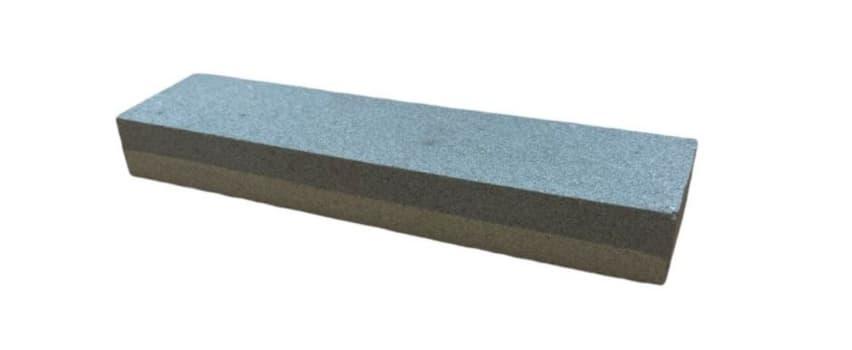A Chef's Guide to Sharpening Stone Grit

No matter if you're a professional chef or a home cook, using sharpening stones effectively can significantly improve your knife care routine. A well-maintained knife not only cuts more efficiently but also ensures safety and enjoyment while preparing meals.
Sharpening stones and whetstones play a crucial role in any culinary setup. They help fix minor damages, refine edges, and polish blades. While some cooks opt for electric sharpeners or honing rods for convenience, many still prefer sharpening stones due to the precise control they offer over the sharpening process.
This brings us to the concept of sharpening stone grits.
Understanding Sharpening Stone Grit
Sharpening stones come in different "grit" sizes, each designed for specific purposes during the sharpening process. The grit size refers to the number of abrasive particles per square inch, influencing how much metal the stone can remove and the smoothness of the final edge. Here’s a quick rundown of the most common grit sizes:
- Coarse grit stones (200-600 grit): Ideal for heavy-duty tasks like repairing severely damaged edges or reshaping dull blades. These stones remove metal quickly but can leave a rough surface that needs further refinement.
- Medium grit stones (800-2000 grit): Used for general sharpening and smoothing out the edge after using a coarse stone. These stones provide a balance between speed and finish quality, making them suitable for most kitchen tasks.
Selecting the Right Stone Grit
Picking the appropriate sharpening stone grit depends on several factors. If your knife has a dull or severely damaged edge, starting with a coarse grit stone is recommended to reshape the blade. For regular maintenance, a medium grit stone is typically enough. The type of knife and its intended use also plays a significant role. For example, a chef’s knife might require a finer grit to achieve a sharper edge, whereas a paring knife may only need a medium grit for routine touch-ups.
Additionally, consider how often you use your knives and the types of cutting tasks involved. Frequent use or precision tasks may necessitate finer grits, while medium grits could suffice for less frequent or heavy-duty use.
Preparing Your Stones and Sharpening Your Knives
As expected, proper preparation of your sharpening stone forms the foundation of successful sharpening. Most sharpening stones, especially water stones, must be soaked in water prior to use. This keeps the stone’s surface wet and prevents clogging with metal shavings. Typically, water stones should be soaked for about 10 to 15 minutes, though it’s advisable to follow the manufacturer’s instructions.
Oiling is necessary for oil stones, requiring honing oil to lubricate and clean the stone. Make sure your sharpening area is stable, well-lit, and placed on a non-slip surface, possibly using a mat or towel to secure the stone.
Once everything is set up, it’s time to begin sharpening. Start with a coarse grit stone if the blade is extremely dull or damaged. Maintain a consistent angle, usually between 15 to 20 degrees, and use even strokes for an even edge. After major sharpening, switch to a medium grit stone to refine the edge, followed by a fine grit stone for polishing.
Avoid common mistakes like applying excessive pressure, which can harm both the stone and the blade, or varying the angle, leading to uneven sharpening. Proper lubrication remains critical to prevent clogging and ensure smooth sharpening.
Caring for Your Sharpening Stones
Maintaining your sharpening stones is essential for their longevity and effectiveness. After each use, thoroughly clean the stones to remove metal filings and debris. Rinse water stones under running water and let them air dry before storage. For oil stones, simply wipe them with a cloth and a bit of oil. Store both types of stones in a dry place to prevent damage.
To extend the life of your sharpening stones, regularly flatten them using a flattening plate to maintain an even surface. Avoid dropping or knocking the stones, as this can cause chips or cracks. Following the manufacturer’s guidelines and using the stones correctly will ensure they continue to serve as reliable tools for your knife sharpening needs.
If you're in search of top-quality sharpening stones and whetstones, look no further than Butchers Equipment Warehouse. We offer a wide selection of grit options, ensuring you always have the right tools for the job. Need assistance choosing the perfect sharpening stone? Feel free to reach out to us at 01254 427 761, and our team will be delighted to assist you!
Stainless Steel Floor Drain,Stainless Steel Square Shower Drain,Stainless Steel Shower Floor Drain,Stainless Steel Tile Insert Floor Drain
Kaiping City Jinqiang Hardware Products Co.,Ltd , https://www.kimpowerdrain.com